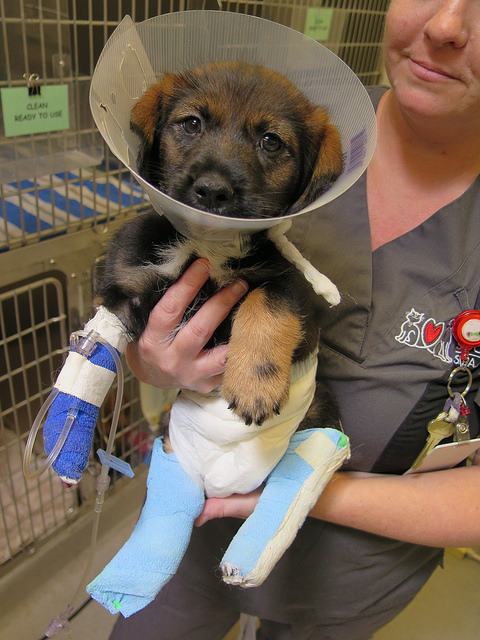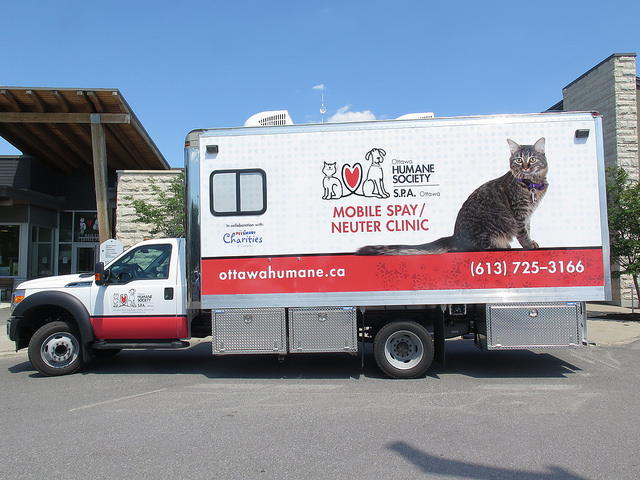January 19, 2018
The Evolution of Animal Welfare: Part Two

Shelters like the OHS are providing more veterinary care for pets like Angel.
Last week, I reported that I recently had the opportunity to hear Jim Tedford speak. Jim is the CEO of the Society of Animal Welfare Administrators — the premier group that brings together senior staff in humane societies, rescues, and municipal animal shelters. Jim spoke about the evolution of animal welfare and I thought it was bang-on. I thought you might like to hear about it.
Last week’s blog covered four trends: fewer incoming animals; “The rise of the rescue”; changing community expectations; and sources of companion animals. This week, I have four more trends that Jim identified to share with you.
Veterinary Care in Shelters
Historically, many shelters across North America struggled to provide even the basic care, such as vaccines. Where once spay/neuter surgeries delayed adoptions, dentistry is now the main reason for delays. Larger, progressive shelters like the OHS, are now performing blood work and diagnostics, fracture repairs, lump removals, amputation and other much more advanced care that would not have been possible in the past.
Funding Models
Overall, intake to shelters is falling across most of North America; costs, however, are not. In most cases they are increasing. “Quick turnaround” animals like young, small dogs are not being relinquished as quickly and the number of pit bulls and “blocky headed whatevers” is rising almost everywhere. Revenue from adoption fees is dropping. In a way, this is good news, because it means fewer animals need rehoming, but shelters are even more dependent upon donations than in the past. Some are opening their own for-profit veterinary clinics as a source of revenue. The OHS, though, has a policy of not competing against our community veterinarians.
Preserving the Bond

The OHS Mobile Spay/Neuter Clinic helps preserve the human animal bond in our community.
Increasingly, shelters are recognizing that sometimes the best shelter is the home the animal is already in. To support this, many are offering such services as behavioural support, assistance with veterinary costs, and food banks. Providing these supports can be scary prospect for any shelter struggling to provide for the animals already in its care. The OHS’s strategic plan calls for forays into this work, starting with our Mobile Spay Neuter Clinic.
Shelters and Veterinarians as Partners
There is tremendous opportunity for partnerships between veterinarians and shelters. Shelters need all the help they can get. Increasingly, veterinarians are coming to understand that shelters are sometimes their biggest clients and are a source of long-term business from adopters. Remember, shelters are now the number one source of companion animals! The OHS enjoys an excellent relationship with our veterinary community and, in turn, it is very supportive of our work.
The world of animal welfare has changed pretty dramatically, even since I entered it 18 years ago — thankfully, mostly for the better. There are a lot of reasons why animal welfare has improved, but assuredly one of them is that we are all talking more, listening more, and learning more from one another.
Bruce Roney
Executive Director
